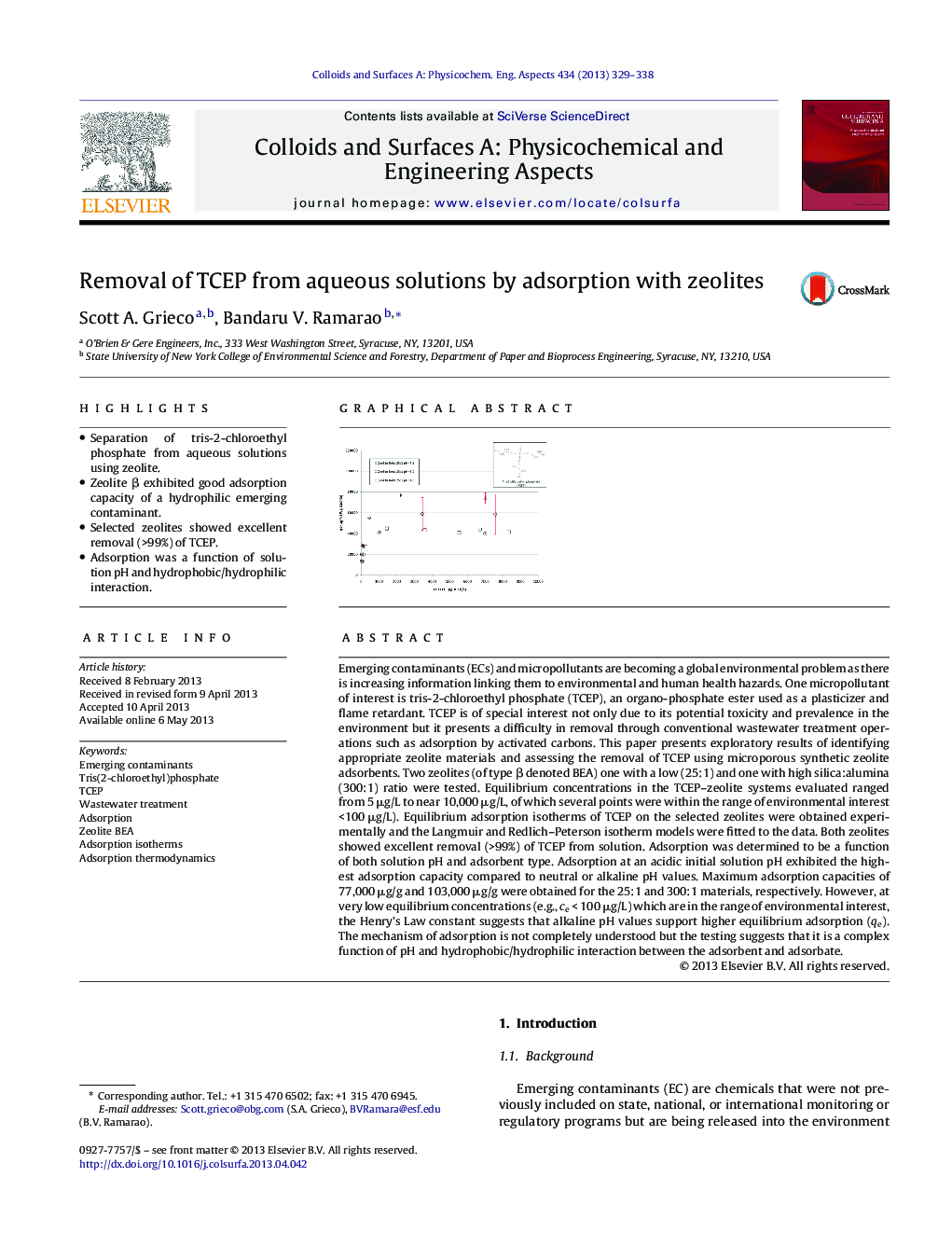| کد مقاله | کد نشریه | سال انتشار | مقاله انگلیسی | نسخه تمام متن |
|---|---|---|---|---|
| 593459 | 1453939 | 2013 | 10 صفحه PDF | دانلود رایگان |

• Separation of tris-2-chloroethyl phosphate from aqueous solutions using zeolite.
• Zeolite β exhibited good adsorption capacity of a hydrophilic emerging contaminant.
• Selected zeolites showed excellent removal (>99%) of TCEP.
• Adsorption was a function of solution pH and hydrophobic/hydrophilic interaction.
Emerging contaminants (ECs) and micropollutants are becoming a global environmental problem as there is increasing information linking them to environmental and human health hazards. One micropollutant of interest is tris-2-chloroethyl phosphate (TCEP), an organo-phosphate ester used as a plasticizer and flame retardant. TCEP is of special interest not only due to its potential toxicity and prevalence in the environment but it presents a difficulty in removal through conventional wastewater treatment operations such as adsorption by activated carbons. This paper presents exploratory results of identifying appropriate zeolite materials and assessing the removal of TCEP using microporous synthetic zeolite adsorbents. Two zeolites (of type β denoted BEA) one with a low (25:1) and one with high silica:alumina (300:1) ratio were tested. Equilibrium concentrations in the TCEP–zeolite systems evaluated ranged from 5 μg/L to near 10,000 μg/L, of which several points were within the range of environmental interest <100 μg/L). Equilibrium adsorption isotherms of TCEP on the selected zeolites were obtained experimentally and the Langmuir and Redlich–Peterson isotherm models were fitted to the data. Both zeolites showed excellent removal (>99%) of TCEP from solution. Adsorption was determined to be a function of both solution pH and adsorbent type. Adsorption at an acidic initial solution pH exhibited the highest adsorption capacity compared to neutral or alkaline pH values. Maximum adsorption capacities of 77,000 μg/g and 103,000 μg/g were obtained for the 25:1 and 300:1 materials, respectively. However, at very low equilibrium concentrations (e.g., ce < 100 μg/L) which are in the range of environmental interest, the Henry's Law constant suggests that alkaline pH values support higher equilibrium adsorption (qe). The mechanism of adsorption is not completely understood but the testing suggests that it is a complex function of pH and hydrophobic/hydrophilic interaction between the adsorbent and adsorbate.
Figure optionsDownload as PowerPoint slide
Journal: Colloids and Surfaces A: Physicochemical and Engineering Aspects - Volume 434, 5 October 2013, Pages 329–338